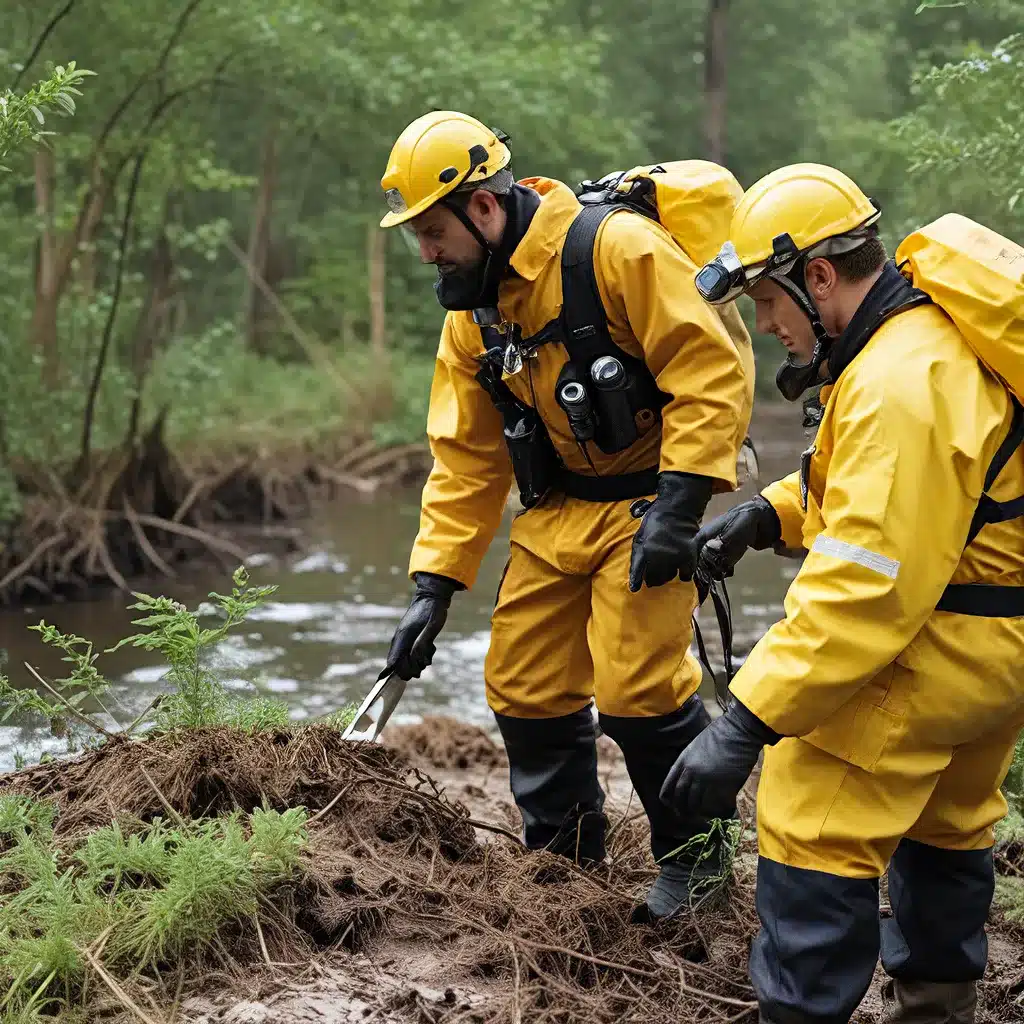
Imagine this: Disaster strikes, chaos reigns, and the fate of an entire community hangs in the balance. While the public may fixate on the sheer magnitude of the crisis, there’s a dedicated group of individuals quietly working behind the scenes to safeguard lives, properties, and the delicate ecosystems we all depend on. These unsung heroes are the environmental emergency responders, and their role in mitigating the impact of disasters is nothing short of heroic.
Anticipating the Unthinkable
When it comes to emergency preparedness, the old adage “hope for the best, but plan for the worst” couldn’t be more apt. Emergency professionals know that the key to effective disaster response lies in meticulous planning and foresight. They meticulously analyze historical data, predictive models, and potential risk factors to craft comprehensive emergency response plans (ERPs) that address a wide range of scenarios – from natural disasters like floods and hurricanes to man-made crises such as chemical spills or infrastructure failures.
The sheer breadth of their risk assessment process is astounding. These dedicated individuals leave no stone unturned, delving into the intricate web of environmental threats that could potentially impact a region. By anticipating the unthinkable, they’re able to develop targeted strategies and allocate resources in a way that maximizes resilience and minimizes the fallout.
Stress-Testing Community Resilience
Once the emergency plans are in place, the real work begins. Environmental emergency responders put their strategies to the test, conducting rigorous simulations and drills to gauge the robustness and recovery capabilities of critical infrastructure. Imagine a city conducting a mock power outage to understand the potential impact on traffic control systems and hospital operations – that’s the level of meticulous planning we’re talking about.
By systematically disrupting services and monitoring the performance of essential systems, these unsung heroes identify weaknesses and implement improvements. It’s a never-ending cycle of testing, evaluating, and refining – all to ensure that when disaster strikes, the community is as prepared and resilient as possible.
Mastering the Art of Communication
In the high-stakes world of emergency response, clear and effective communication can mean the difference between life and death. Environmental emergency responders understand this fundamental truth, and they’ve honed their skills to perfection.
From managing intricate warning systems to coordinating with various agencies and the public, these professionals are true masters of crisis communication. They regularly test sirens, conduct public alert drills, and establish robust protocols for activating these systems, ensuring that the public receives timely and accurate information when seconds count.
But their communication prowess extends beyond just warning systems. They also play a crucial role in educating the community, empowering individuals with the knowledge and practical skills to protect themselves, their families, and their neighbors. Through educational campaigns, community workshops, and school programs, they foster a culture of preparedness that is essential for weathering any storm.
Logistics: The Unsung Backbone of Disaster Response
When disaster strikes, the sheer scale of the emergency can be overwhelming. That’s where the logistical expertise of environmental emergency responders truly shines. These unsung heroes ensure that critical supplies – from food and water to medical equipment and shelter materials – are readily accessible and efficiently distributed when they’re needed most.
Coordination with local authorities, community organizations, and suppliers is crucial, as is the continuous review and update of resource inventories. By mastering the complex logistics of disaster response, these professionals help mitigate the impact of crises, ensuring that life-saving resources are available where and when they’re needed.
Advocating for a Safer, More Resilient Future
The role of environmental emergency responders extends far beyond immediate disaster response. These unsung heroes are also tireless advocates for public policy and legislation that can help mitigate risks and enhance community resilience.
Armed with their on-the-ground experience and data-driven insights, they collaborate with lawmakers to shape laws and regulations that promote safety and preparedness. From lobbying for stronger building codes to advocating for environmental conservation, their expertise and unwavering commitment to public welfare are invaluable in shaping a safer, more resilient future for all.
Unsung Heroes, Unsung Impacts
As you can see, the contributions of environmental emergency responders are truly remarkable. They are the unsung heroes who fortify our communities against the unforeseen, masterfully navigating the complex web of environmental risks and ensuring that we are as prepared as possible for the unexpected.
So, the next time disaster strikes, take a moment to appreciate the tireless efforts of these dedicated professionals. Their work may often go unnoticed, but their impact is undeniable. After all, when it comes to safeguarding lives, properties, and the delicate balance of our ecosystems, these unsung heroes are the true champions of environmental emergency response.
And if you’re inspired to join their ranks, I encourage you to explore the opportunities available through Inland Waters Inc., a leading provider of water treatment and environmental services. Together, we can continue to build a safer, more resilient world, one emergency response plan at a time.


